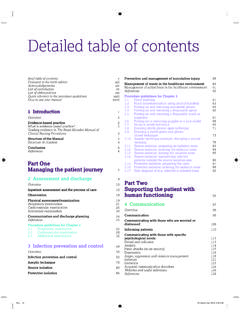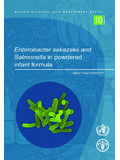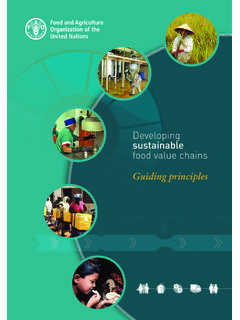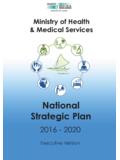Transcription of Guidelines on food fortification with …
1 Guidelines on food fortification with micronutrientsEdited by Lindsay Allen, Bruno de Benoist, Omar Dary and Richard HurrellFood and Agricultural Organization of the United NationsPANISFIATG uidelines on food fortification with micronutrientsInterest in micronutrient malnutrition has increased greatly over the last few years. One of the main reasons is the realization that micronutrient malnutrition contributes substantially to the global burden of disease. Furthermore, although micronutrient malnutrition is more frequent and severe in the developing world and among disadvantaged populations, it also represents a public health problem in some industrialized countries.
2 Measures to correct micronutrient deficiencies aim at ensuring consumption of a balanced diet that is adequate in every nutrient. Unfortunately, this is far from being achieved everywhere since it requires universal access to adequate food and appropriate dietary habits. food fortification has the dual advantage of being able to deliver nutrients to large segments of the population without requiring radical changes in food consumption on several recent high quality publications and programme experience on the subject, information on food fortification has been critically analysed and then translated into scientifically sound Guidelines for application in the field.
3 The main purpose of these Guidelines is to assist countries in the design and implementation of appropriate food fortification programmes. They are intended to be a resource for governments and agencies that are currently implementing or considering food fortification , and a source of information for scientists, technologists and the food industry. The Guidelines are written from a nutrition and public health perspective, to provide practical guidance on how food fortification should be implemented, monitored and evaluated. They are primarily intended for nutrition-related public health programme managers, but should also be useful to all those working to control micronutrient malnutrition, including the food document is organized into four complementary sections.
4 Part I introduces the concept of food fortification as a potential strategy for the control of micronutrient malnutrition. Part II summarizes the prevalence, causes, and consequences of micronutrient deficiencies, and the public health benefits of micronutrient malnutrition control. It lays the groundwork for public health personnel to assess the magnitude of the problem and the potential benefits of fortification in their particular situation. Part III provides technical information on the various chemical forms of micronutrients that can be used to fortify foods, and reviews prior experiences of their use in specific food vehicles.
5 Part IV describes the key steps involved in designing, implementing, and sustaining fortification programmes. Starting with a determination of the amount of nutrients to be added to foods, this process continues with the implementation of monitoring and evaluating systems (including quality control/quality assurance procedures), followed by an estimation of cost-effectiveness and cost benefit ratios. The importance of, and strategies for, regulation and international harmonization, communication, advocacy, consumer marketing and public education are also explained in some detail.
6 ISBN 92 4 159401 2 Guidelines on food fortification with micronutrientsEdited by Lindsay Allen, Bruno de Benoist, Omar Dary and Richard HurrellFood and Agricultural Organization of the United NationsPANISFIATG uidelines on food fortification with micronutrientsInterest in micronutrient malnutrition has increased greatly over the last few years. One of the main reasons is the realization that micronutrient malnutrition contributes substantially to the global burden of disease. Furthermore, although micronutrient malnutrition is more frequent and severe in the developing world and among disadvantaged populations, it also represents a public health problem in some industrialized countries.
7 Measures to correct micronutrient deficiencies aim at ensuring consumption of a balanced diet that is adequate in every nutrient. Unfortunately, this is far from being achieved everywhere since it requires universal access to adequate food and appropriate dietary habits. food fortification has the dual advantage of being able to deliver nutrients to large segments of the population without requiring radical changes in food consumption on several recent high quality publications and programme experience on the subject, information on food fortification has been critically analysed and then translated into scientifically sound Guidelines for application in the field.
8 The main purpose of these Guidelines is to assist countries in the design and implementation of appropriate food fortification programmes. They are intended to be a resource for governments and agencies that are currently implementing or considering food fortification , and a source of information for scientists, technologists and the food industry. The Guidelines are written from a nutrition and public health perspective, to provide practical guidance on how food fortification should be implemented, monitored and evaluated. They are primarily intended for nutrition-related public health programme managers, but should also be useful to all those working to control micronutrient malnutrition, including the food document is organized into four complementary sections.
9 Part I introduces the concept of food fortification as a potential strategy for the control of micronutrient malnutrition. Part II summarizes the prevalence, causes, and consequences of micronutrient deficiencies, and the public health benefits of micronutrient malnutrition control. It lays the groundwork for public health personnel to assess the magnitude of the problem and the potential benefits of fortification in their particular situation. Part III provides technical information on the various chemical forms of micronutrients that can be used to fortify foods, and reviews prior experiences of their use in specific food vehicles.
10 Part IV describes the key steps involved in designing, implementing, and sustaining fortification programmes. Starting with a determination of the amount of nutrients to be added to foods, this process continues with the implementation of monitoring and evaluating systems (including quality control/quality assurance procedures), followed by an estimation of cost-effectiveness and cost benefit ratios. The importance of, and strategies for, regulation and international harmonization, communication, advocacy, consumer marketing and public education are also explained in some detail.
















